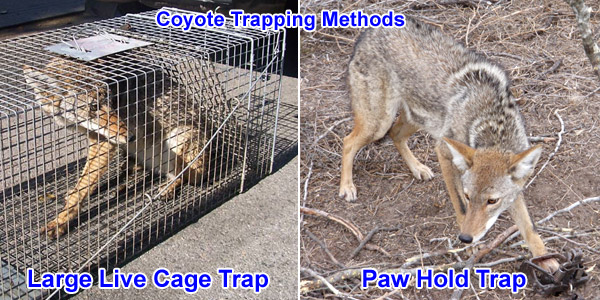-
info@aaanimalcontrol.com
Call us for help in your town
Humane Wildlife Education
Is a Coyote Dangerous to Humans?
Need wildlife removal in your hometown? We service over 500 USA locations! Click here to hire us in your town and check prices - updated for year 2020.
If you want the cryptic answer, humans are more dangerous to coyotes than the other way around. It is mankind's intrusion into the wild that causes most of the clashes between animals and people. A more straightforward answer would be that any animal has the potential to be dangerous to people.

After you read the below information, you may want to click on one of these guides that I wrote:
How much does coyote removal cost? - get the lowdown on prices.
How to get rid of coyotes - my main coyote removal info guide.
Coyotes are relatively shy creatures when it comes to human interaction. They are not bold, like wolves, which will shadow a person for days in the wild waiting for an opportunity to strike. Coyotes are comparatively small compared to their more vicious cousins, and pose no real aggression threat to an adult human. Even children are usually safe from healthy coyotes while in the woods. Humans are not seen as a food source to these animals, and so no immediate danger is present. A pack of coyotes will not venture close to a human without good cause, and even then it is rarely for the purpose of an attack. That being said, there are always situations that can make a coyote dangerous to a human.
Sick or injured animals are unpredictable, and coyotes are a prime rabies suspect in the United States. Rabies affects the neurologic system of an animal and causes irrational, unpredictable behavior and confusion. Any rabid animal may attack a human. For this reason, if you come across a coyote that does not seem fearful of you, you should immediately seek cover and call the local police or game warden. Coyotes are not confrontational, and a coyote that is acting fearless or unnaturally nonchalant should be a cause for concern. Obvious signs of illness include unsteady gait, rapid eye movement (a fast vibration of the eyeball itself, though you’d have to be very close to notice this!), foamed saliva around the mouth, unkempt hair coat, and unnatural muscle twitches. A coyote with rabies can look completely fine, so use your best judgment and stay away from the animal regardless of its behavior!
Urban coyotes are a bit different when it comes to human conflict. Urban coyotes have adapted to the rough and tough lifestyle required to live in more populated settings. These coyotes are used to living near humans, so they are not nearly as afraid as coyotes in a national park. Urban coyotes can be aggressive, and will climb under or over fences to attack small dogs and cats. When the fear level in a coyote diminishes, that is when they become dangerous to people. Coyotes in this setting can just as easily attack a young child as they might a small pet.
Confusion can sometimes be a contributing factor when it comes to coyotes and people. Just as a shark will mistakenly bite a surfer resembling a swimming seal, coyotes may accidentally attack or injure a person. Hunters, who are covered in camouflage and deer scent, may find themselves the recipients of a coyote bite simply because they smell like a prey animal and are too disguised to be identified otherwise. One bite is usually all it takes for the coyote to realize a mistake has been made, but by that time the hunter is too terrified and outraged to let the transgression slip by. Any time a coyote attacks a person it is an automatic death sentence for the canine. Such instances are incredibly rare. As a general rule, coyotes do not attack people.
Are coyotes dangerous to people? Not really. On a scale of one to ten, ten being the most dangerous animal, a coyote is probably a three or a four. You should worry more about your neighbor’s over-protective dog than you should about a coyote. Dogs frequently attack people; coyotes rarely do.
AAAnimalControl.com is written by me, David. I am a professional nuisance wildlife control operator. It is my goal to provide education about safe, responsible & effective solutions to
human-wildlife conflicts. I provide a lot of "how-to" info, but in many cases, wildlife removal is complex, dangerous, and subject to local laws. Sometimes I recommend hiring a professional.
I have spent over 10 years now training and investigating companies all over the United States, serving over 650 USA cities and towns. I believe my hand-picked list is far better than what you'll find
on a standard web search by yourself. For my recommendation of a local critter trapper in your area, click here for my nationwide list of 100's of professional wildlife control experts.



















